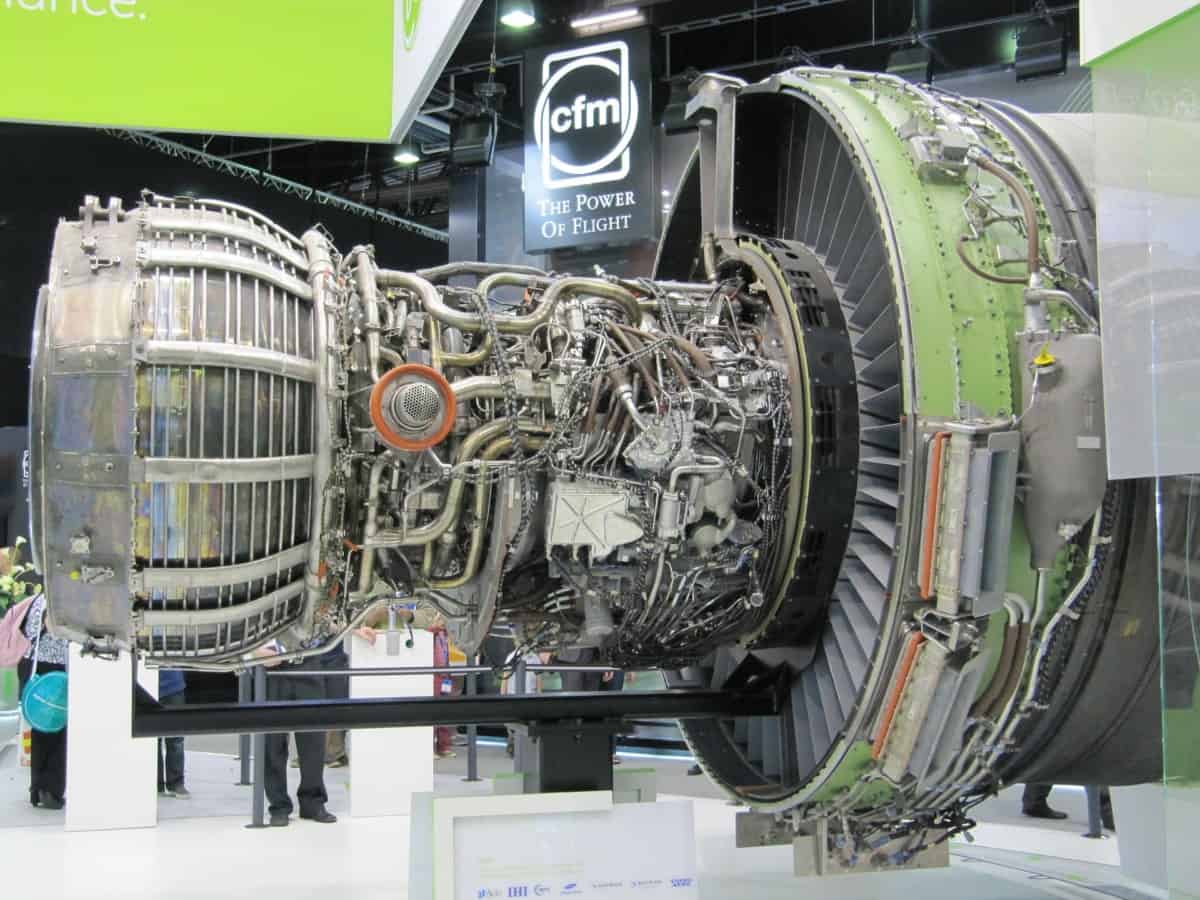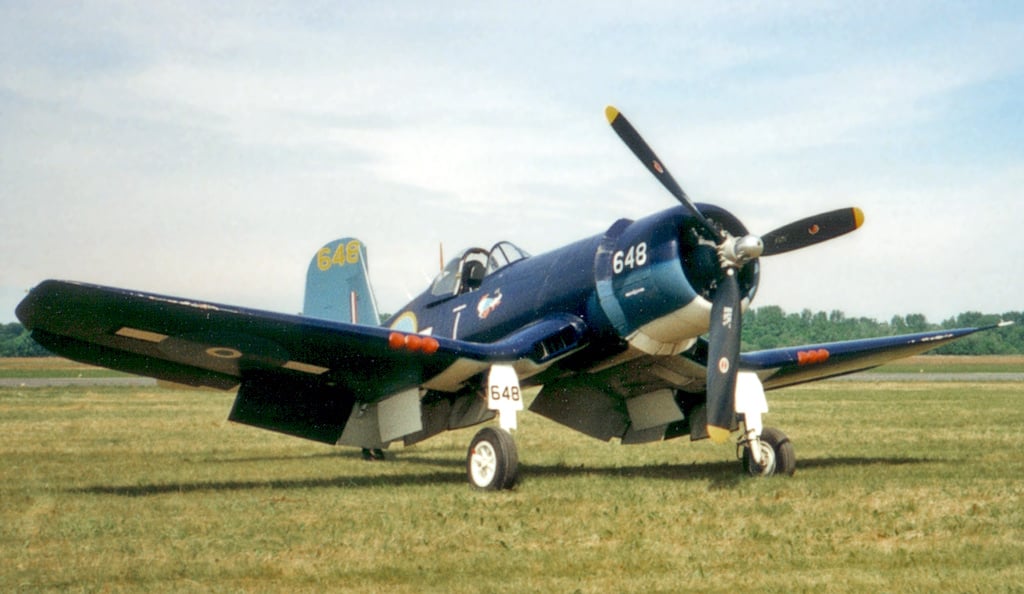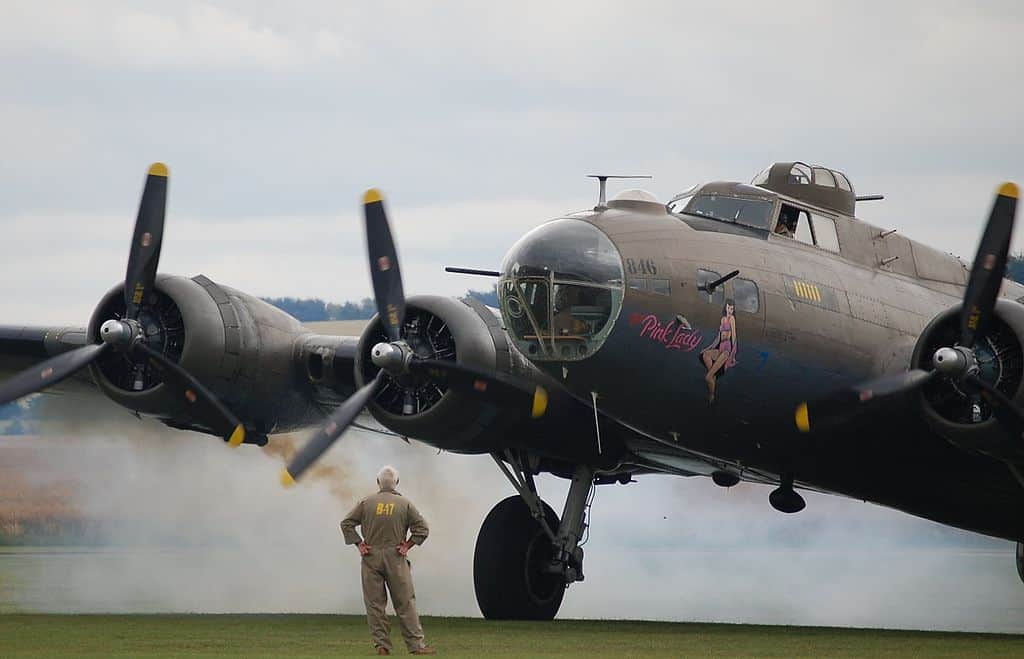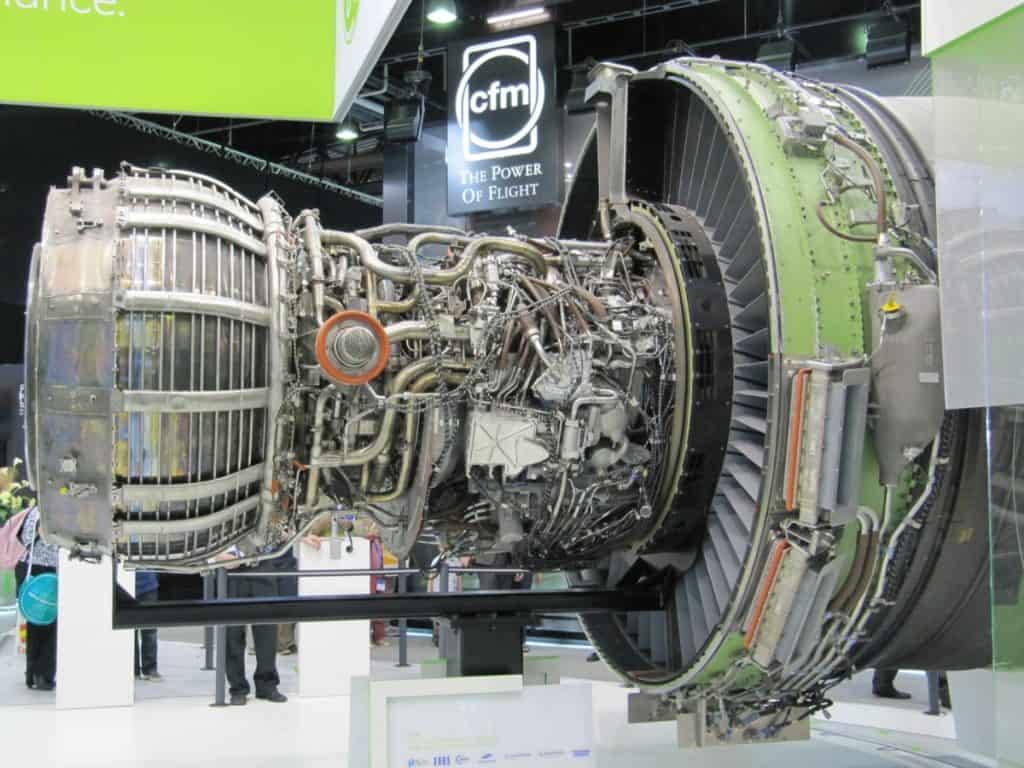
Aircraft have many different types of engines to help them get off the ground. There is actually a lot of different types of engine that fulfill a specific aircraft type. Each engine type is selected by the aircraft designers to meet the specific needs of the aircraft on their drawing board.
Aircraft use two types of engine: Gas turbine or piston-powered. These are used to rotate turbines, propellors or rotorblades to move air to allow the aircraft to create lift and fly. There are many variations to each engine type to suit the various classes and categories of aircraft.
To begin with lets break down the two main types of aircraft engine:
- Gas Turbine or Jet Engine
- Piston Engine
By far the most common engine you are used to seeing is the gas turbine engine fitted to all modern-day commercial airliners. Within the gas turbine type, there are several variations designed for specific aircraft.
Let’s first discuss gas turbine and Jet engines as they are widely used in civil and defense aviation.
Gas Turbine Engines
Gas turbine engines consist of the following four types:
- Turbojet
- Turbofan
- Turboprop
- Turboshaft
1. TurboJet
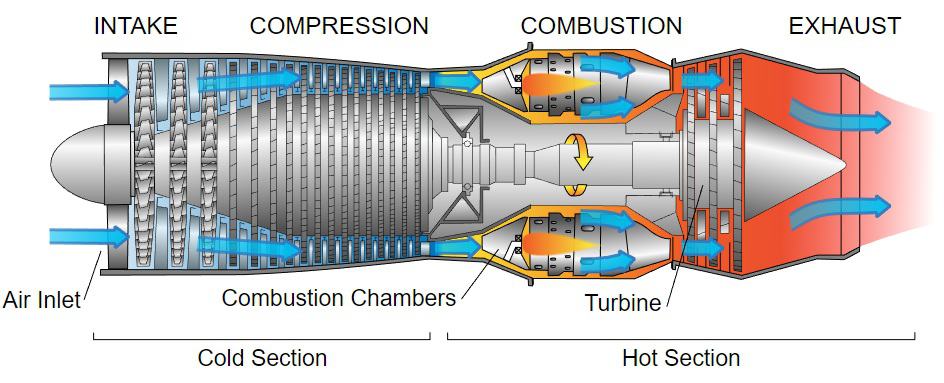
The Turbojet Engine is the most basic gas turbine engine. It comprises of nothing more than an inlet to bring the air into the engine, a rotating compressor to compress the incoming air and increase its pressure & velocity, a combustion chamber where atomized fuel is mixed with the compressed air and ignited, gas producer turbines driven by the hot expanding gasses which is used to drive the front compressor, and an exhaust to funnel the hot, expanding gases away from the aircraft.
It provides thrust from the gasses leaving the exhaust at the rear of the engine at high speed and high pressure.
It is one of the earliest gas turbine engine designs ever manufactured and due to its compact shape and consuming less area, it is mainly used in military fighter jets.
Where to Find a Turbojet Engine:
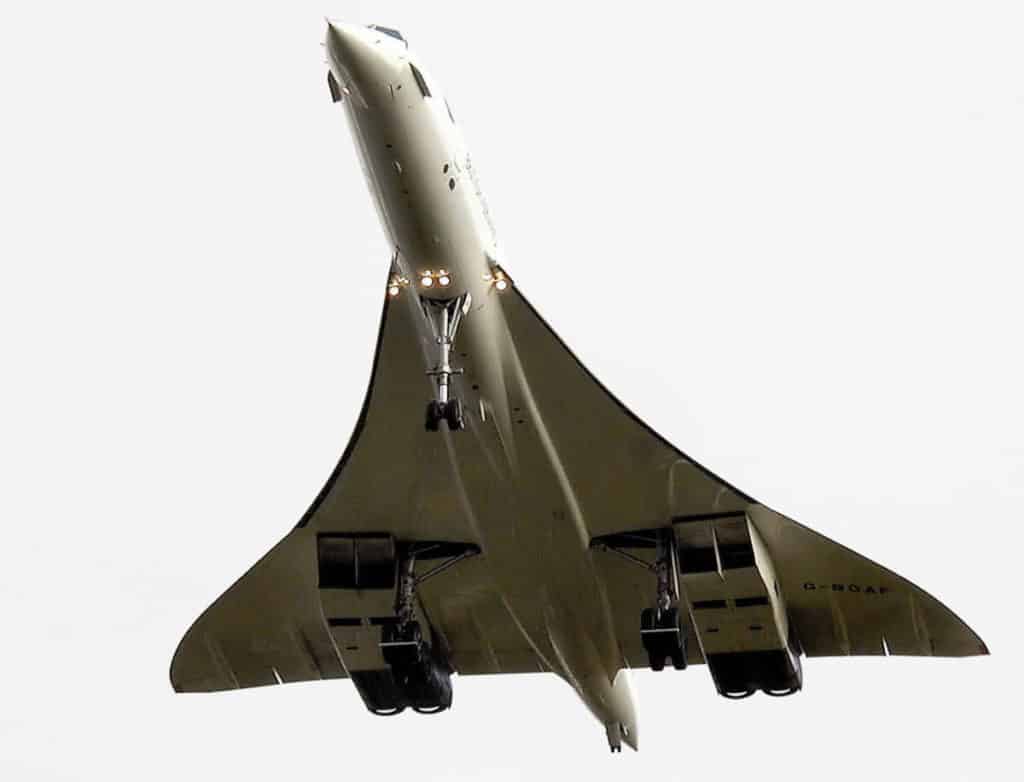
The famous Concorde used 4 Rolls Royce Olympus turbojet engines arranged in pairs.
It was built with afterburners and was rated to produce thrust of 32,000lbf without the afterburners and 38,000lbf during usage of afterburners.
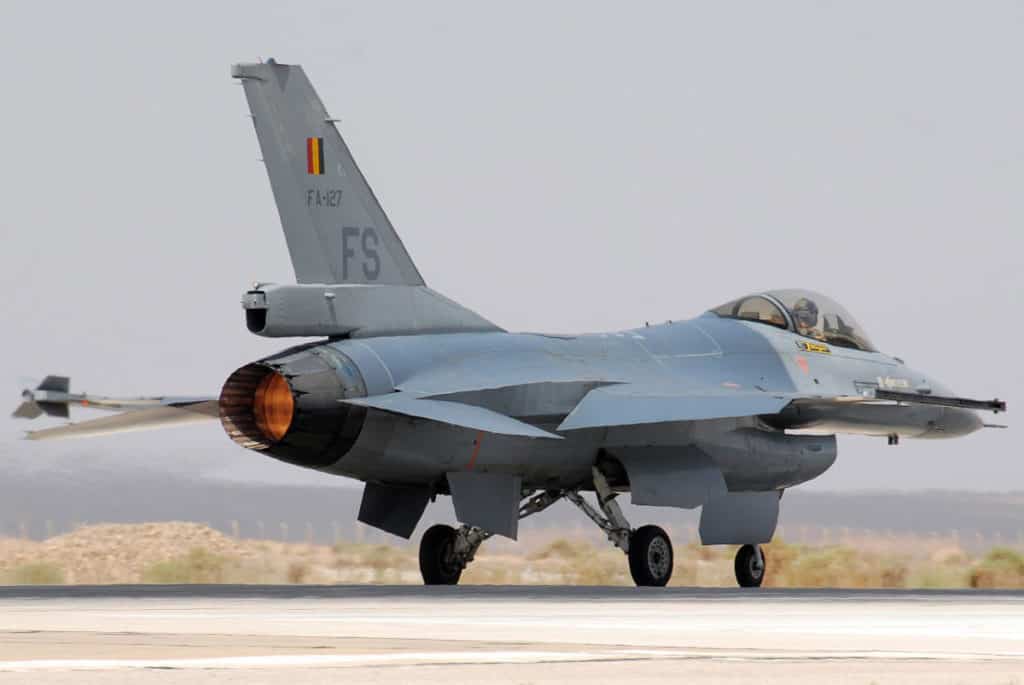
Most modern military fighter jets will use either a single or pair of turbojet engines with an additional afterburner to provide their primary means of propulsion.
An afterburner is where fuel is fed into the hot exhaust gasses leaving the engine creating a huge boost in thrust.
2. Turbofan
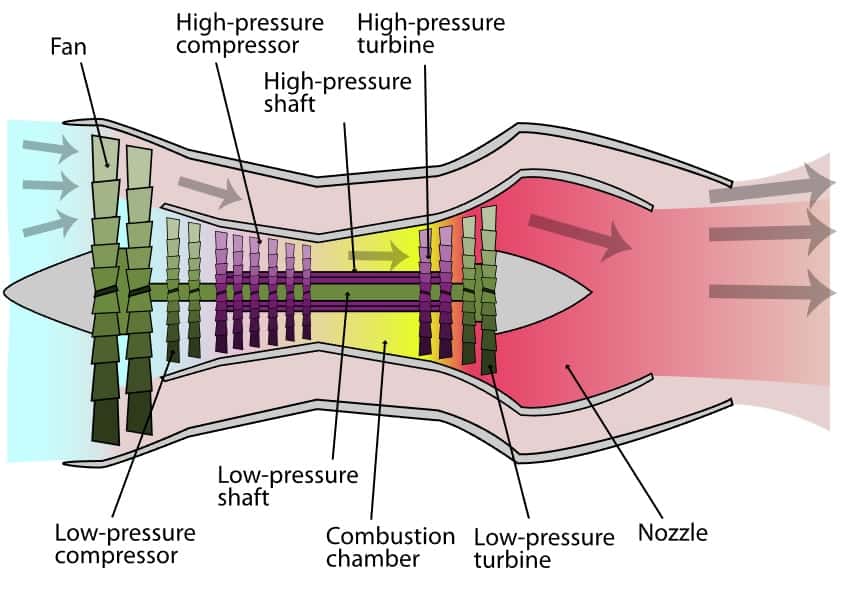
The Turbofan engine is the most common aircraft engine you will see as it comes in many sizes and is fitted to everything from the largest airliners like the Boeing 747 or Airbus A380 down to the smallest Cessna Citation or Gulfstream G280 business jets.
Turbofan engines are extended/updated versions of the turbojet engine, however with a major added component – “The Fan”.
This engine is divided into 2 sections namely, the core and the bypass section. The fan directs air both into the core and the bypass area, the core being the basic turbojet engine producing thrust as a result of combustion and the bypass area producing additional thrust due to its shape.

Join My Newsletter & Get Great Tips, Information and Experiences To Help You Become a Superb Pilot!
The bypass section acts like a venturi and produces 80% of the total thrust of the engine, whereas the core contributes the remaining 20%.
The main job of the core is to keep the fan running, and the job of bypass air to give the required thrust to the aircraft.
As the gas exits the rear of the engine it passes through the high-pressure turbine which drives the high-pressure compressor section and then through the low-pressure turbine which drives the low-pressure compressor section and fan.
Where to Find a Turbofan Engine:
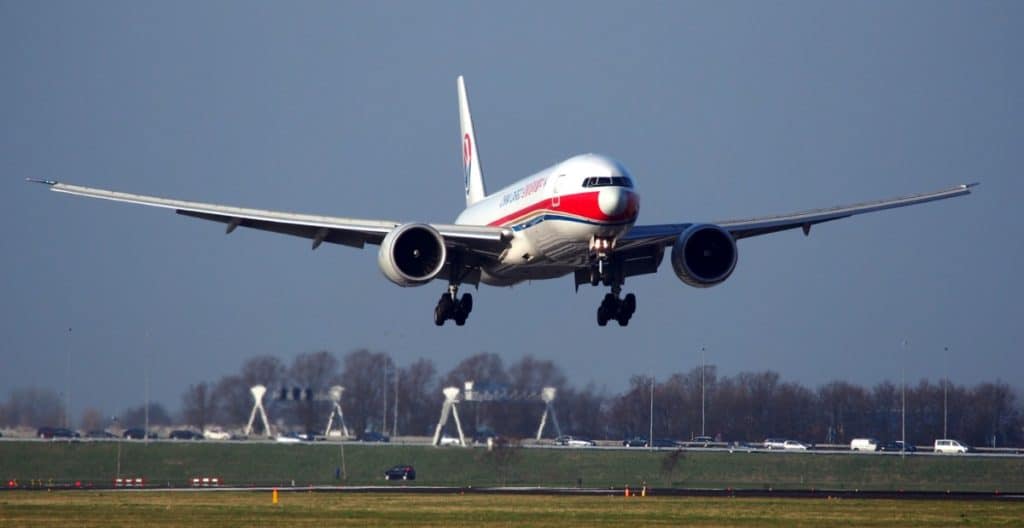
General Electric’s GE9X is the largest turbofan engine with the largest fan diameter of 134in (11’2″).
It is mainly fitted to the B777X and a few B787. Each engine can produce 134,000 lbs thrust at maximum power.
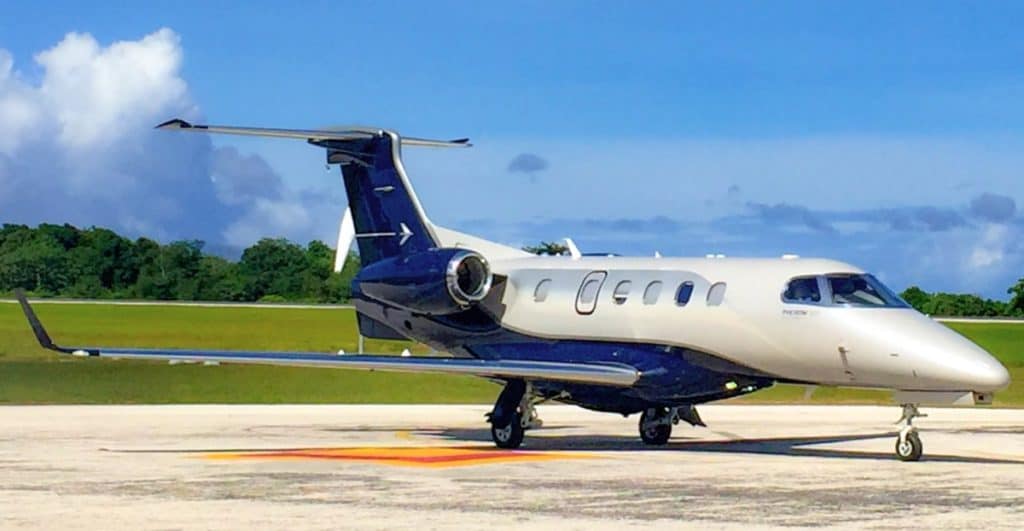
Pratt & Whitney’s PW535 turbofan engine is one of the smallest on the market.
Used to power this Embraer Phenom 300 private jet with over 3,475lbs of thrust per engine.
3. Turboprop
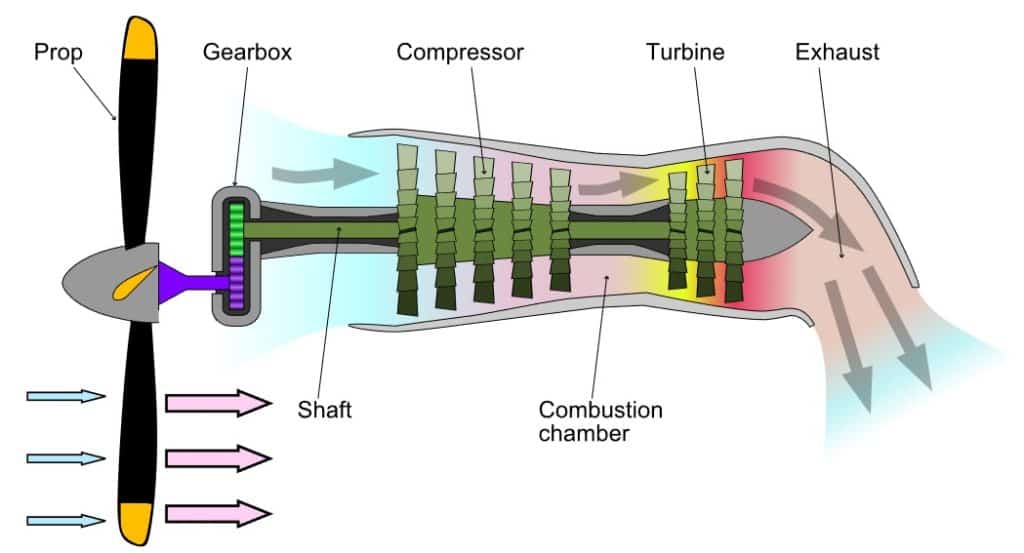
The Turboprop engine is the second favorite engine for the airlines and military. Fitted to regional airliners like the Bombardier Q400 and military aircraft like the C-130 Hercules or E2C Hawkeye.
Unlike the previous engines where the thrust was generated by the exhaust air leaving the engine, the thrust and the forward motion in this type of engine are achieved by rotating a propeller mounted on the front of the engine.
The gasses leaving the combustion chamber rotate the power turbines at the rear of the engine, which drives the compressor and a gearbox which in turn rotates the propeller mounted on the front of the engine.
The exhaust gas leaving this type of engine barely participates in the total thrust produced as the maximum thrust force – the forward motion used to propel the aircraft, is achieved by the propeller.
Where to Find a Turboprop Engine:
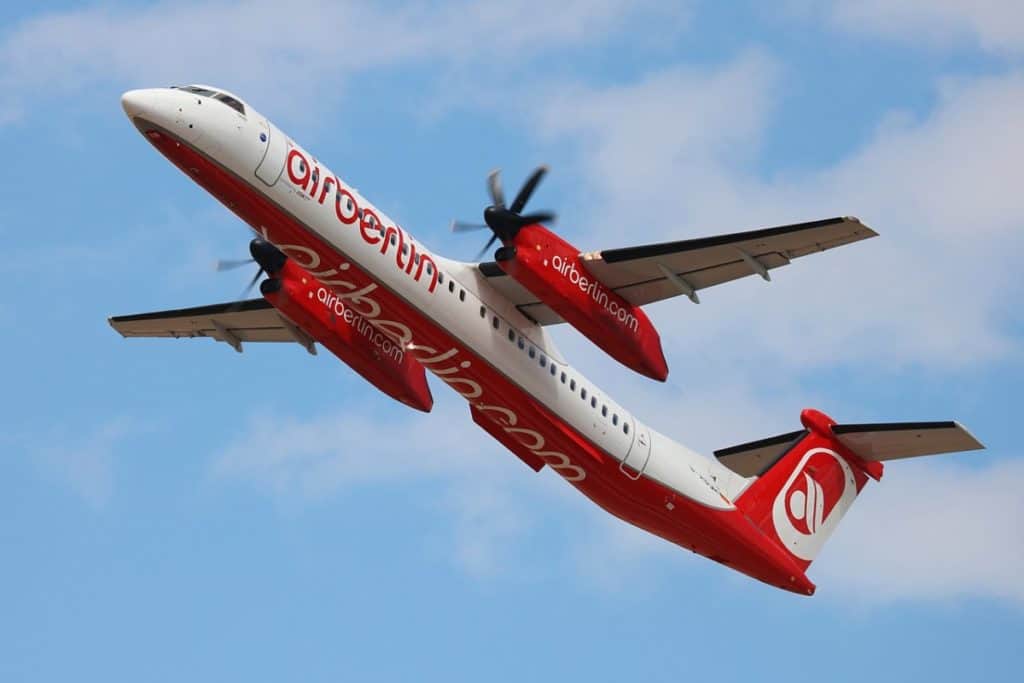
The Pratt & Whitney PW100/150 series dominates the turboprop engine market with a whopping 89% share!
The PW150 has a maximum power of 5,000shp.
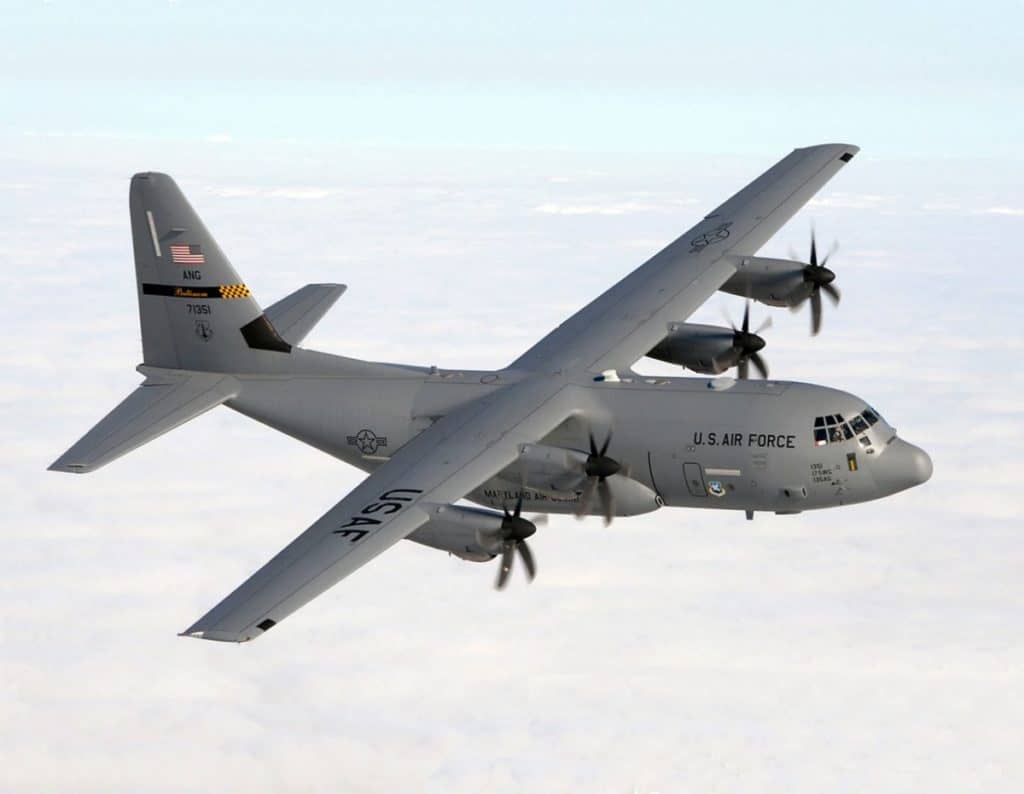
The mighty Lockheed Martin C-130J Hercules uses four Allison AE2100D3 turboprop engines, each rated at 4,591 shaft horsepower.
The J model also incorporates a 6-bladed composite propellor and full digital engine control for each engine.
4. Turboshaft
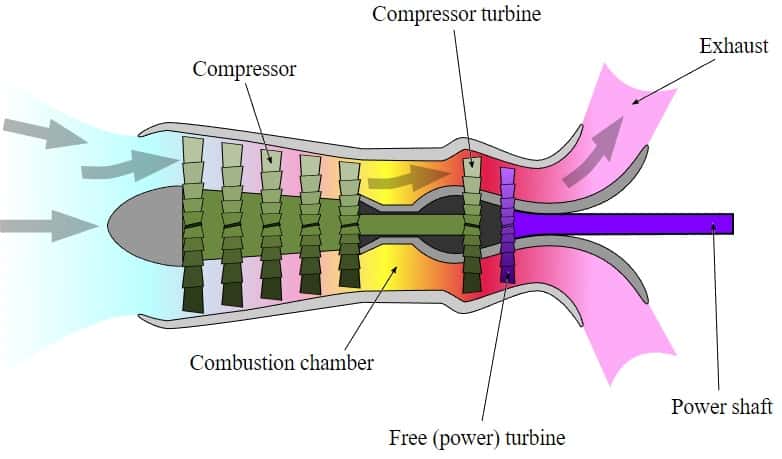
The Turboshaft engine is primarily used on helicopters to drive a main transmission which in turn drives the main rotor system to create the helicopter’s lift.
The turboshaft engines use a secondary power turbine that is rotated by the hot gases leaving the engine. This power turbine drives a shaft which then drives the helicopter transmission. Turboshafts can have the power shaft exit the rear of the engine or by using an internal gearbox, exit on the underside or sides of the engine.
Again, just like the turboprops, the exhaust gas provides no power to get the aircraft airborne.
There are many different designs available as helicopters need a compact but powerful engine to get them airborne.
Where to Find a Turboshaft Engine:
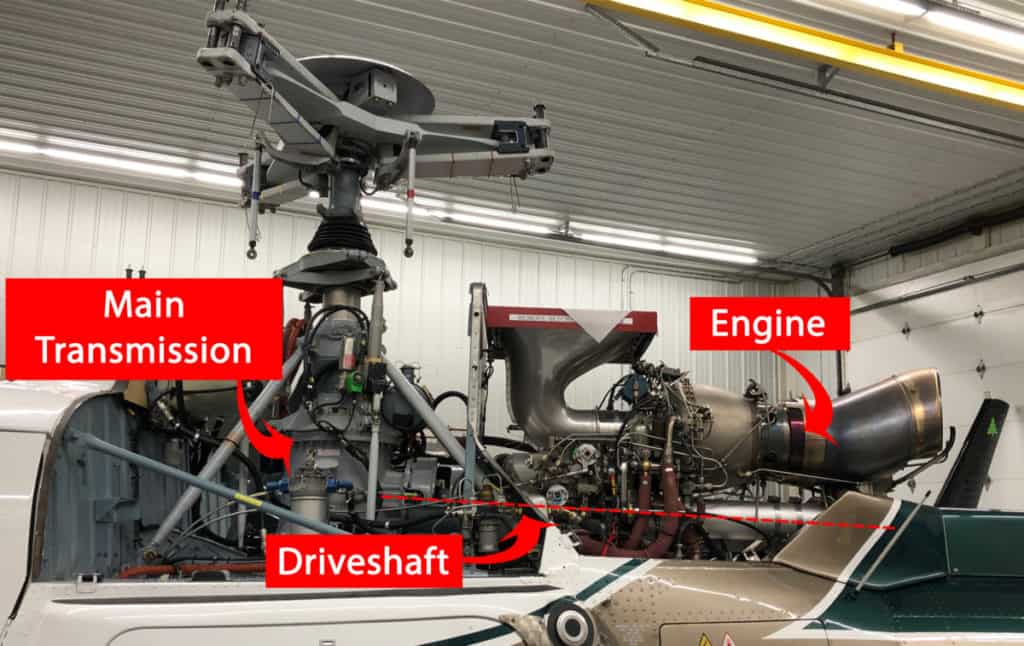
The Arriel 1D1 Turboshaft engine is used to power the Airbus AS350 B2 Helicopter series. This power shaft exits on the underside of the engine.
Used by over 2,350 customers across the globe this 730shp powerhouse is a true workhorse!
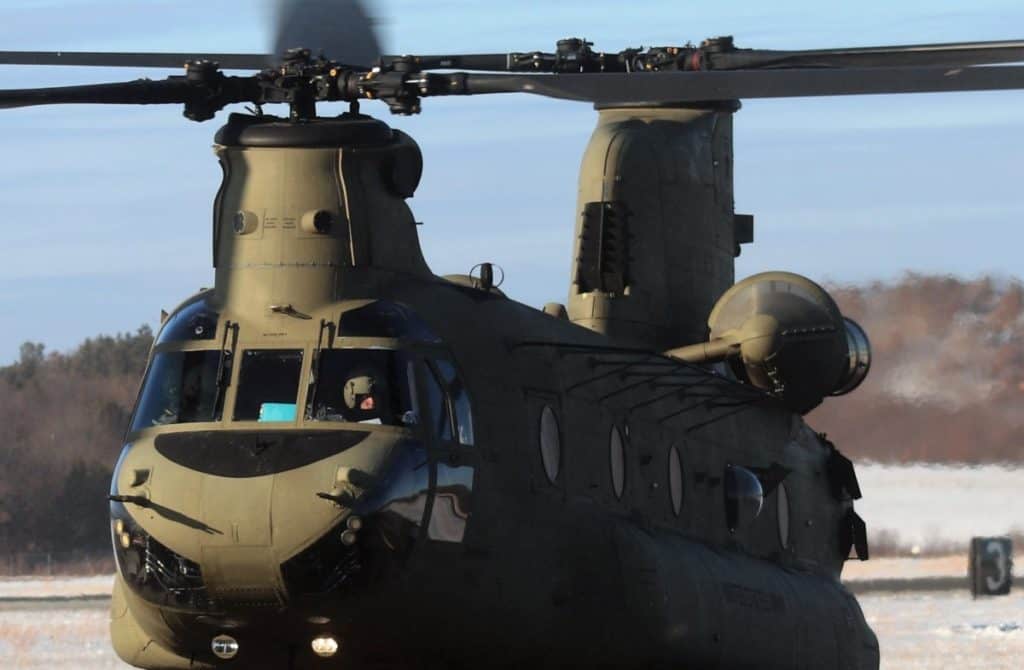
The Boeing CH-47F Chinook uses two 6,000shp Honeywell T55-GA-714C turboshaft engines.
This power shaft on these engines exits on the front of the engine before entering a 90° gearbox to send it into the main transmission as seen here.
Learn More…
Try These Articles:
* What Fuel Do Aircraft Use? – Same As Your Car???
* Do Helicopters Have Jet Engines – Some Do, Some Don’t!
Piston Engines
Where most commercial and defense aviation is into jet engines, piston engine aircraft are more popular for training and general aviation aircraft.
Piston engines are a great alternative to gas turbine engines as they are far cheaper to buy, and maintain and their fuel consumption is far lower. They are, however, heavy for the power they produce compared to a gas turbine engine.
For a piston engine to produce the same power as a gas turbine engine the size and weight of the engine block alone would make it unusable attached to a small aircraft. Piston engines are great for aircraft up to around 6 seats, after that the gas turbine engine becomes the most beneficial choice for aircraft designers in today’s world.
As the name says, “Piston engine”, the piston is the major component operating inside the engine to create its power. An aircraft piston engine comprises of:-
- Crankcase – The body of the engine;
- Crank Shaft – The shaft connecting the pistons, the propeller, and the accessory gearbox area;
- Cam Shaft – The shafts driven by the crankshaft, perform the task of opening and closing of the intake and exhaust valves;
- Cylinder – The housing to the piston, and connecting rod (rod connecting crankshaft and piston) and where the whole process of power generation takes place. It is that part of the engine, exposed to the highest temperature in the engine. It also forms the housing for the valve mechanism;
- Piston – The cylindrical plug which moves up and down within the cylinder transferring chemical energy into mechanical energy;
- Connecting Rod – The rod connecting the piston to the crankshaft. Its role is to convert linear motion of the piston into rotary motion of the crankshaft;
- Propeller – The aerodynamic component of the engine which provides forward thrust to the aircraft, when rotating;
- Cowling – The engine cover, so as to reduce aerodynamic drag.
How Does a Piston Engine Work?
Inside the cylinder, pistons move in sync with the crankshaft. There are generally 4 strokes (cycle of piston movement) in the piston engine namely :
- Induction Stroke – Piston moves from the top of the cylinder to the bottom, the intake valve opens up and the air and fuel mixture gets collected in the cylinder.
- Compression Stroke – The intake valve closes and the air and fuel mixture is trapped in the cylinder. The piston moves from the bottom to the top, compressing the air and fuel mixture, thereby increasing its temperature and pressure.
- Power Stroke – Just before/during the start of the power stroke, the spark plugs ignite and burns the air and fuel mixture, which causes the gases to expand and forces the piston to move down, from the top.
- Exhaust Stroke – After the piston reaches the bottom of the cylinder, the energy of the burnt air and fuel mixture is lost and needs to be expelled from the engine. The piston moves up and forces the gas out of the engine through the exhaust valve. The exhaust valve is open during the exhaust stroke.
This cycle keeps on repeating, causing the crankshaft to give a constant or variable rotating speed, in turn, which rotates the propeller mounted on the front of the engine. In the case of a helicopter, the crankshaft of the engine is connected to the main transmission usually via a pulley & belt array.
Types of Aircraft Piston Engine:
There are three types of piston engines found in new and old aircraft:
- Horizontally Opposed Engines
- V-Block Engines
- Radial Engines
1. Horizontally Opposed Engines
Piston engines used in modern aircraft are all 4 stroke designs as seen in the video above and are classified on the basis of the number and position of cylinders they contain.
Typical modern piston aircraft engines will have either 4 or 6 cylinders and be mounted in a configuration known as ‘Horizontally Opposed’. Instead of the cylinders being mounted vertically like in your vehicle, they are mounted horizontally to the ground with 2 or 3 cylinders on each side.
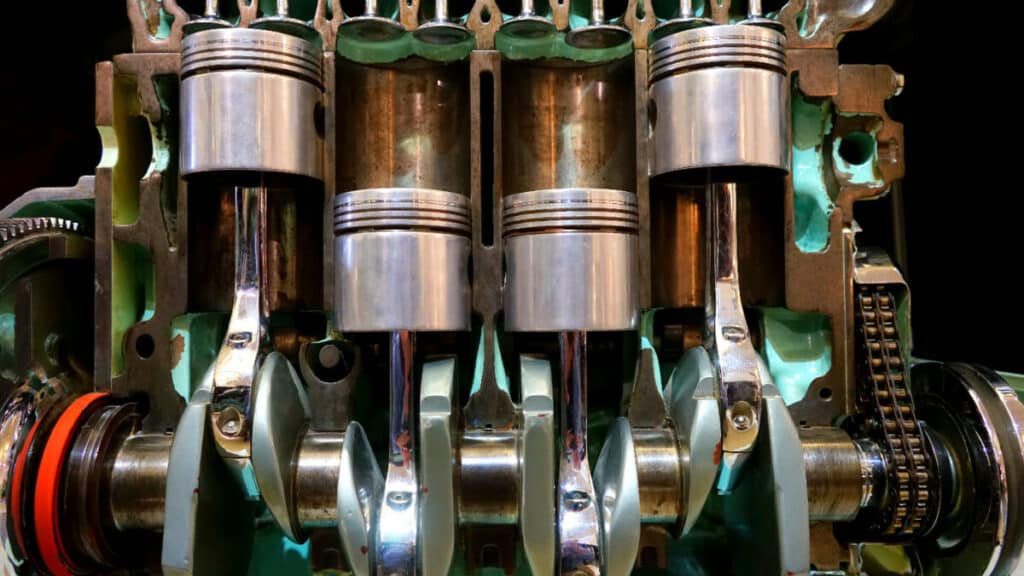
By doing this the size of the engine is much smaller and compact making it perfect to be installed on the front of an airplane fuselage or on a wing in the case of a twin-engined airplane.
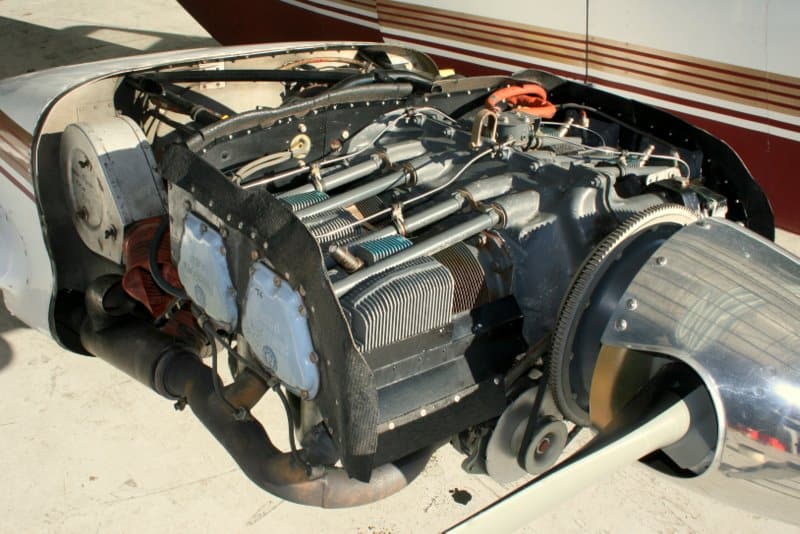
Where to Find a Horizontally Opposed Piston Engine:
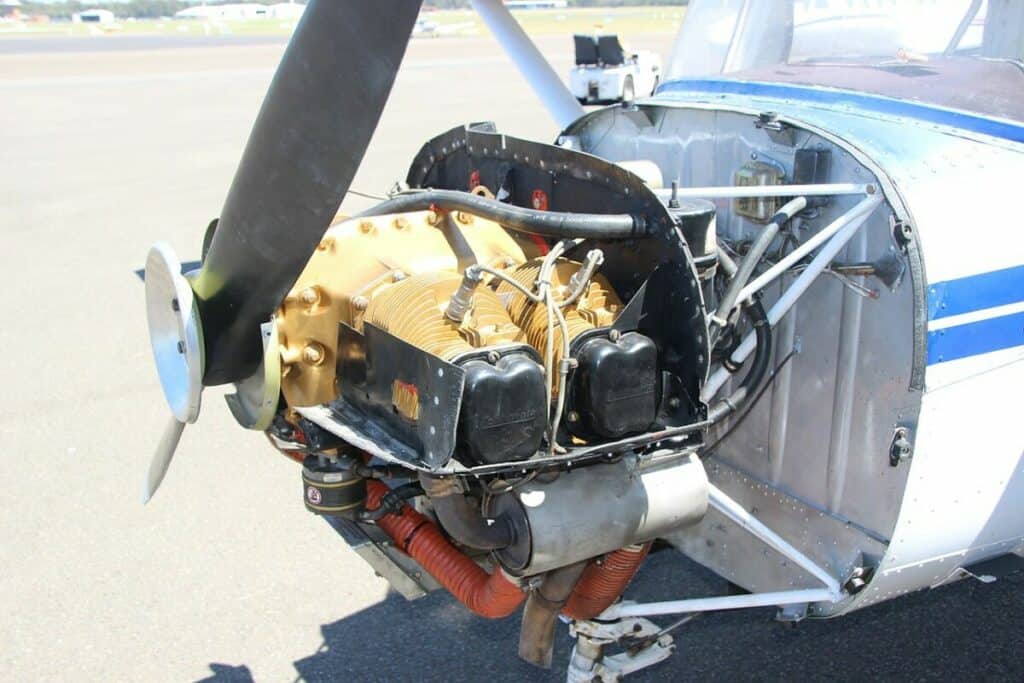
The Continental 200 Series engine is a common horizontally opposed engine fitted to many light aircraft like this Cessna 152.
This air-cooled, naturally aspirated, 4 cylinder engine runs on AvGas providing 125hp at maximum power.
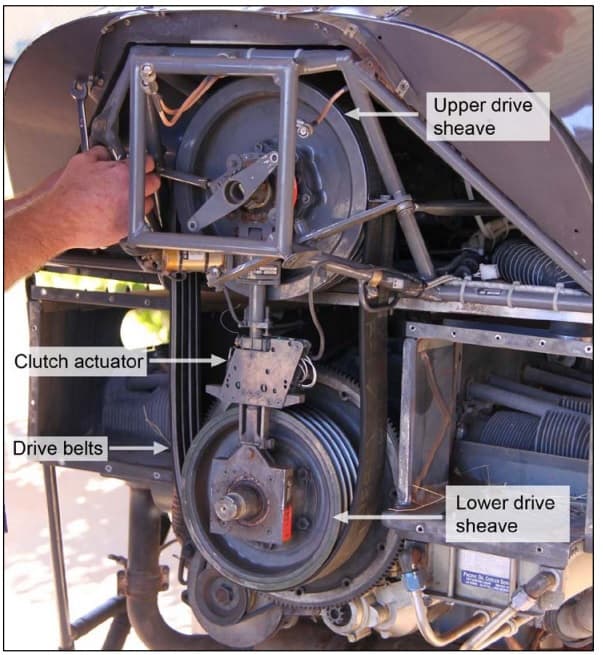
The Lycoming HIO-360 Series engine is another common horizontally opposed engine fitted to most small 2 seat helicopters.
Instead of driving a propellor, the engine connects to the lower drive sheave where belts connect it to the main transmission via a clutch tensioning system.
When starting the engine the clutch is wound in allowing the belts to be slack, once the engine is started the clutch engages and winds apart to tension the belts.
2. V-Block Engines
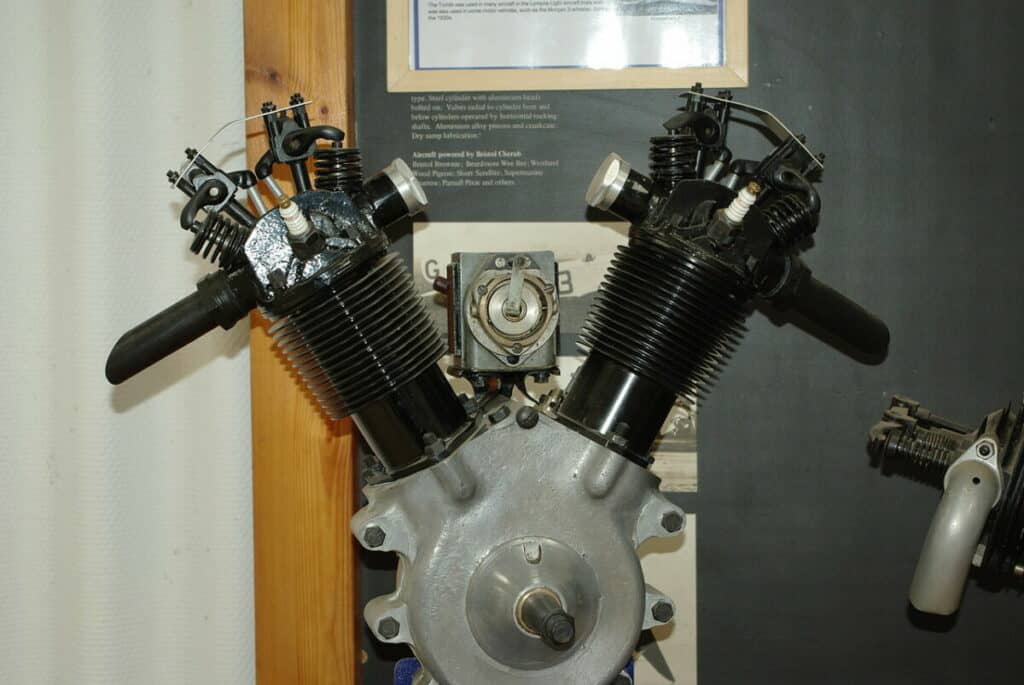
V-block engines are essentially two inline engine blocks mounted together in a ‘V’ formation. By doing this double the number of cylinders are able to drive the single crankshaft in a relatively small footprint providing far more power.
Common mounting angles between the two engine cases were 60° and 45° with the most popular engine, the Rolls-Royce Merlin engine mounted at 45°. V-block engines were large and heavy and really only found their way into military aircraft during World War II before the horizontally opposed engines become the norm post-war.
Where to Find a V-Block Piston Engine:
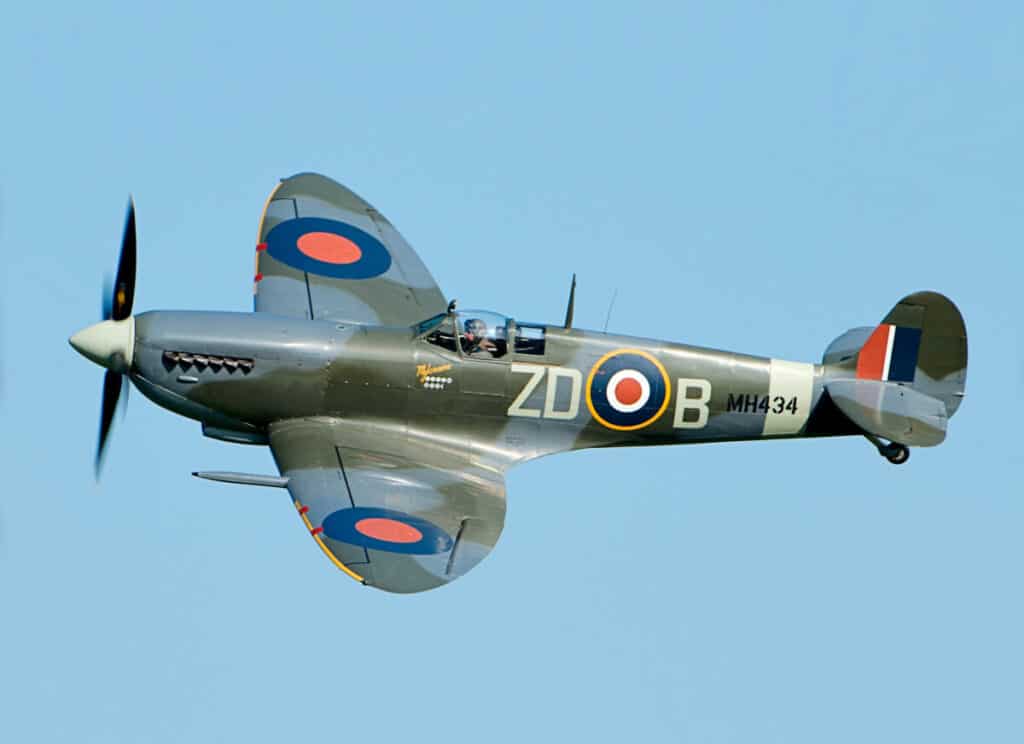
The most famous v-block engine is that of the Rolls Royce Merlin Engine.
Developed in 1933 this 12 cylinder, 27 liter powerhouse powered the Supermarine Spitfire and many other famous WWII airplanes.
The Merlin engine fitted to the Spitfire produced 1,600hp by the end of WWII
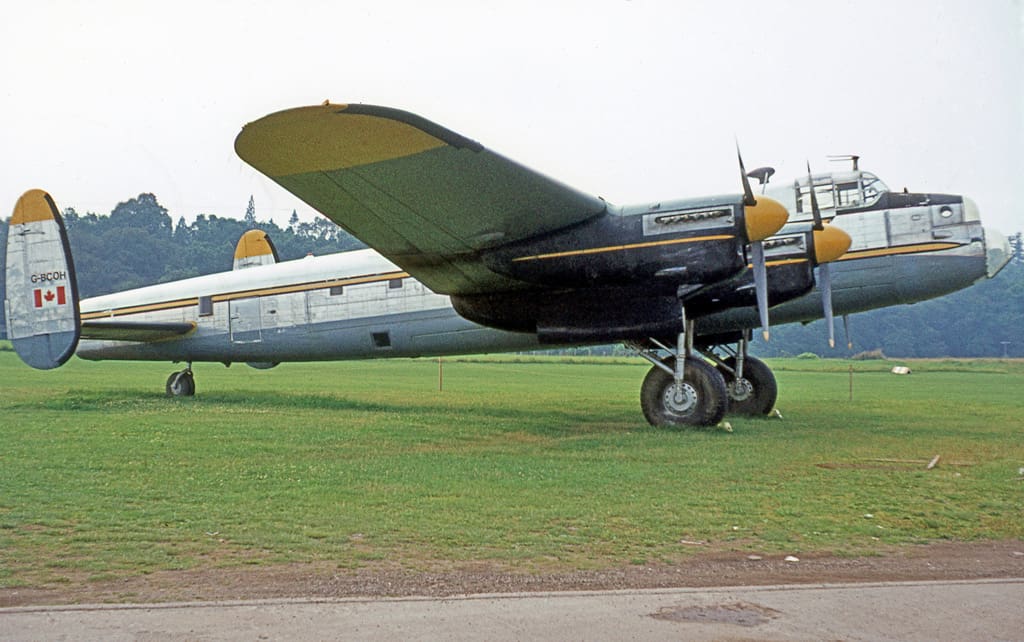
Also using 4 Rolls Royce Merlin V-Block engines the Avro Lancastrian was the civilian offspring of the well-known WWII British bomber, the Avro Lancaster.
The Merlin 620 series engines were supercharged and produced 1,175hp each.
3. Radial Engines
Where to Find a Radial Piston Engine:
Learn More…
Try These Articles:
* Helicopter Engine Failures – A Pilot Properly Explains!
* Why Are Airplane Engines So Expensive?

